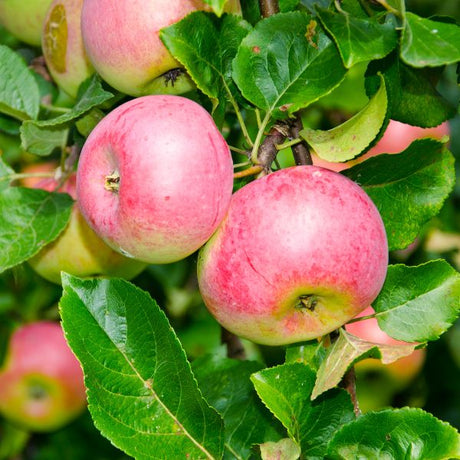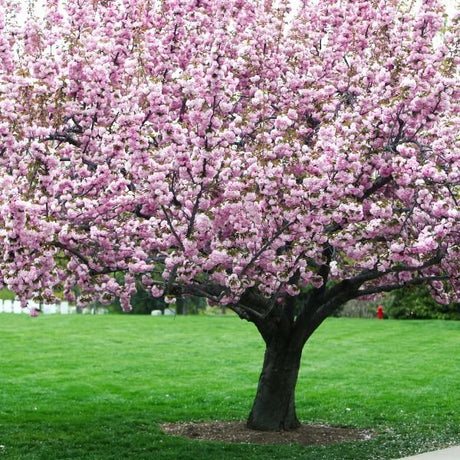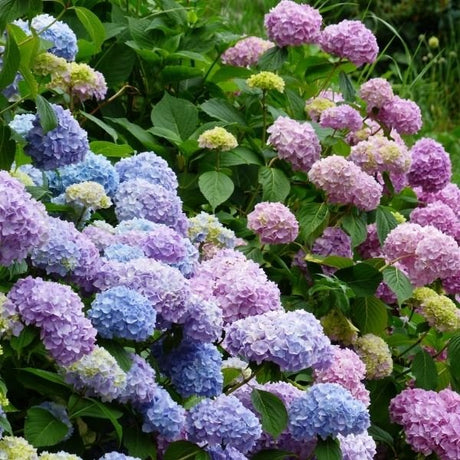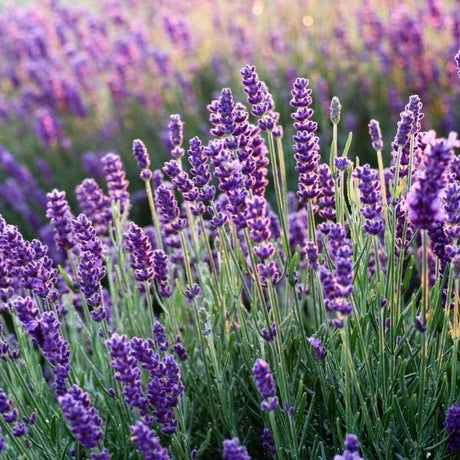Nagami Kumquat Tree
Fortunella margarita 'Nagami'
- Stay Protected with Plant Sentry ™
Nagami Kumquat Tree - #3 Container 2-3 Feet is backordered and will ship as soon as it is back in stock.
Plant Sentry™
Plant Sentry™
Plant Sentry is designed to protect both consumers and the nursery trade from invasive plant pests and diseases. Sites that display the Plant Sentry protection badge are protected from consumers buying and nurseries shipping material carrying invasive pests and diseases.
This proprietary eCommerce software prevents the shipment of a restricted plant to each state. The Plant Sentry system includes a shipment certification program. The Plant Sentry Compliance Officer works closely with NatureHills.com and each nursery or fulfillment center to ensure only compliant plants are sold to customers.
Click Here to learn more

Delivery and Shipping
Delivery and Shipping
Shipping
To obtain a more accurate shipment time-frame, simply enter your zip code in the “Find Your Growing Zone” box to the right. Our plants are grown all over the country and lead time on items may be different because of this. Once your order is placed, you will also receive the specific shipment time-frame information as part of your order confirmation. Once an item ships, you will receive shipment notification and tracking numbers, so you can follow along while your plant travels to your doorstep. We use FedEx, UPS, or USPS at our discretion.
Due to winter weather we have put a hold on shipping to the areas shown below in grey. You can still order now and we will ship the plant to you during an appropriate time for your zone.
Standard Shipping Rates
At Nature Hills we handle, package and ship the products you order with the utmost care to ensure healthy delivery. Shipping and handling charges are calculated based on the tables below. Please note that some items include an additional handling surcharge, these will be noted on the item's product page.
| From | To | S&H |
|---|---|---|
| $0 | $19.99 | $24.99 |
| $20 | $49.99 | $29.99 |
| $50 | $69.99 | $34.99 |
| $70 | $99.99 | $39.99 |
| $100 | $129.99 | $44.99 |
| $130 | $149.99 | $48.99 |
| $150 | $150+ | Approx 28% |
Click here to see our full rates
Understanding Plant Options
Nature Hills offers plants in two main formats:
- Container Plants: Grown in pots with soil, sized by container volume and plant age
- Bare Root Plants: Dormant plants without soil, sized by height measurements
Container Plant Sizes
Container sizes indicate plant age and growing capacity rather than liquid volume equivalents. Our containers follow industry-standard nursery "trade gallon" specifications, which differ from standard liquid gallon measurements.
Young Plants (6 months to 18 months old)
| Container Size | Actual Volume | Metric Equivalent |
|---|---|---|
| 2" x 2" x 3" | 0.18 - 0.21 dry quarts | 0.20 - 0.23 dry liters |
| 4" Container | 0.31 - 0.87 dry quarts | 0.35 - 0.96 dry liters |
| 4.5" Container | 0.65 dry quarts | 0.72 dry liters |
| 6" Container | 1.4 dry quarts | 1.59 dry liters |
| 1 Quart | 1 dry quart | 1.1 dry liters |
| 5.5" Container | 1.89 dry quarts | 2.08 dry liters |
Established Plants (18 months to 2.5 years old)
| Container Size | Actual Volume | Metric Equivalent |
|---|---|---|
| 2 Quart | 2 dry quarts | 2.2 dry liters |
| #1 Container | 2.26 - 3.73 dry quarts | 2.49 - 4.11 dry liters |
| 5" x 5" x 12" | 3.5 - 4.3 dry quarts | 3.85 - 4.74 dry liters |
Mature Plants (2-4 years old)
| Container Size | Actual Volume | Metric Equivalent |
|---|---|---|
| #2 Container | 1.19 - 1.76 dry gallons | 5.24 - 7.75 dry liters |
| #3 Container | 2.15 - 2.76 dry gallons | 8.14 - 12.16 dry liters |
Large Plants (3-5 years old)
| Container Size | Actual Volume | Metric Equivalent |
|---|---|---|
| #5 Container | 2.92 - 4.62 dry gallons | 12.86 - 20.35 dry liters |
| #6 Container | 5.25 - 6.01 dry gallons | 23.12 - 26.42 dry liters |
| #7 Container | 5.98 - 6.53 dry gallons | 26.34 - 28.76 dry liters |
Bare Root Plants
Bare root plants are sold by height from the root system to the top of the plant. Plants may exceed minimum height requirements.
Common Sizes:
- Trees: 1 foot, 2 feet, 3 feet, 4 feet, 5 feet, 6 feet
- Shrubs & Perennials: 1 foot, 18 inches, 2 feet
Important Notes
Container Volume Specifications
- Trade Gallon Standard: Our containers follow industry-standard "trade gallon" specifications established by the American National Standards Institute (ANSI Z60.1) for nursery stock
- Volume Variations: Actual soil volume may vary due to plant root systems and growing medium settlement
- Age Indicators: Container size primarily indicates plant age and maturity rather than liquid volume equivalents
Growing Conditions
- Plant size can vary based on variety and growing conditions
- Container size helps indicate plant maturity and establishment level
- Larger containers generally mean more established root systems and faster landscape establishment
Seasonal Availability
- Bare root plants are available seasonally when dormant
- Container plants are available throughout the growing season
- Specific varieties may have limited availability in certain sizes
Questions?
For questions about specific plant sizes or availability, please contact our plant experts who can help you choose the right size for your landscape needs.
Plant Highlights
Nagami Kumquat Tree highlights at a glance!
Specifications
Specifications
-
Brand
-
Botanical Name
-
Growing Zones
-
Mature Height
-
Mature Spread
-
Sun ExposureFull Sun
-
Moisture
-
Soil
-
Growth RateMedium, Slow
-
Flower Color
-
Fall Color
-
Pollinator Friendly
-
Pollinator Required
-
Fragrant
-
Pruning Time
-
Bloom PeriodLate Spring
-
Harvest Time
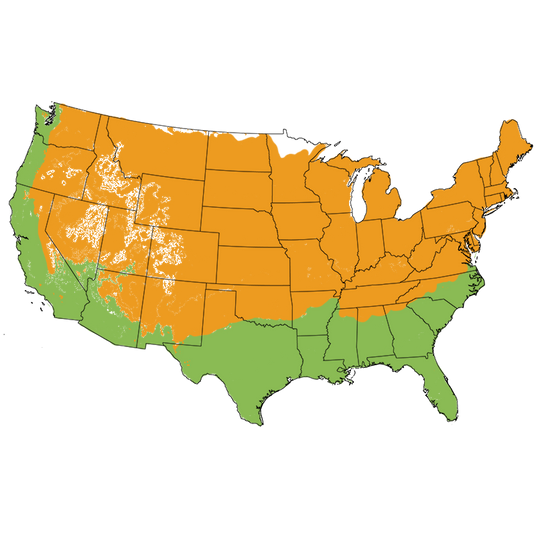
Growing Zones 8-11 (patio 4-11)
Unique Taste, Lucky Nagami Kumquat
For more luck and prosperity in your landscape, try the ever-popular Nagami Kumquat (Fortunella margarita 'Nagami'). This small tree produces Citrus fruit that has been a food staple for centuries throughout China, Japan, India, and Southeast Asia. It's most popular for its distinctively luscious fruit, beautiful form, and year-round fruit display.
Nagami Kumquat is the most popular variety grown in the United States. The most outstanding feature is of course the fruit itself. There's nothing that tastes quite like it.
The oval, bright orange-colored fruit is about the size of a large olive. The fresh fruit is eaten whole for a sweet and sour flavor experience. Yes, even the rind is edible. As you chew, the sweet rind and sour pulp blend in your mouth. It's a perfect blend of acid and sugar.
Remember, "Don't stop chewing" to achieve the most incredible flavor while eating fresh. Candied, cooked, canned, or eaten whole, Kumquats are a tasty, not-to-be-missed treat in any form!
Try juicing the pulp for special mixed Citrus-infused water. Squeeze into gin and tonic cocktails as a special alternative to Lime. Decorate the rim of your glass with a twist of the Nagami rind.
You can also slice the sweet rind to add to salads. This is a very healthy alternative to those overly sweet dried cranberries that have been sprayed with too much sugar.
Candy them for a gift or use the fruit for jelly. Serve with savory meats for an easy, delicious Asian fusion meal.
How nice to grow your own Kumquats!
A beautiful "ornamental" edible, the Nagami Kumquat tree has a very formal, upright character. This small, fruit-bearing evergreen tree makes a perfect focal point in the landscape. It will also thrive on the patio as a tremendous container specimen.
Tiny white flowers appear in the early spring and have a richly tropical appearance. They are delightfully fragrant and perfume your whole yard.
The prolific Nagami Kumquat tree produces an abundance of fruit each growing season. The new winter crop is a prized decoration on the tree during the Lunar New Year and plants are brought indoors for the celebration in Asia and the United States.
Once established, the orange fruit can hang on the tree for months. This gives it a wonderful display value in the landscape. Deep green leaves give a soft, healthy appearance to your tree year-round, even when not in bloom or fruit.
The upright, compact plant is a moderate grower and is able to be easily trained into a very attractive vase shape. It will become a sophisticated and useful specimen.
This adaptable and lovely plant is a great choice for edible and ornamental landscapes alike. People all over the world adore these Citrus plants. Order today!
- Bright Orange Egg-Shaped Fruit
- Prolific Producer & Unique Delicious Fruit
- Eaten Peel & All
- Fragrant White Spring Flowers & Self Pollinating
- Glossy Broadleaf Evergreen Leaves
- Wonderful in Containers
- Specimen Tree, Privacy Hedges & Edible Landscaping
- Historic & Cultural Relevance
#ProPlantTips for Care
Kumquats are one of the best adapted of all Citrus to container growing. Grown best in full sun for the strongest growth and most fruit, Citrus need very well-draining soil on the acidic side.
Provide regular moisture access but allow your tree to dry out slightly between waterings, especially for container plants. Poor drainage is a death sentence for Citrus trees. Plant a Nagami in a special pot for years of enjoyment but ensure it has very good drainage. Citrus is sensitive to overwatering in the container, so be careful to keep it on the dry side. It's better to let the soil dry out a bit between waterings.
Citrus trees prefer an acid soil mix, select a potting soil that is used for Azaleas, Camelia, or Rhododendrons. Add a quarter-inch of bark or pathway bark at the rate of 25% of the total volume of the container. This improves both porosity and adds large-particle organic matter. Feed your container Citrus quarterly with an acid fertilizer like Dr. Earth Acid Lovers Organic Fertilizer.
Protecting Container Citrus From Cold
The natural habitat of this Citrus variety would suggest it is a prime candidate for successfully growing and cropping in marginal Citrus areas. This is also true wherever Citrus trees are brought indoors during the wintertime.
If you're growing these tropical trees in the ground in the lowest of their favored growing zones, they need to be planted in a sheltered spot to avoid the worst of the chill. If a spot like that is unavailable then you are better off planting in a large, deep container.
In border-line growing zones, begin slowly acclimating your tree indoors or into a protected location, eventually moving your tree inside in bright indirect sun for the winter if the temperatures in your area ever dip below that 40°F range. In spring, reverse this process and begin acclimating your tree to again be back out in the full sun all summer. This reduces stress and leaf drop.
- Sun Loving Citrus Tree
- Low Moisture
- Must-Have Well-Drained Acidic Soil
- Prune Early Spring
- Appreciates Regular Fertility
If you see this popular tree in stock, please order right away. We regularly take calls on this, and the Nagami Kumquat Tree is in high demand. Order now at Nature Hills Nursery!
Adaptable, Ornamental Fruit Tree Grows Delicious Fruit
How can anyone not appreciate a fruit that is associated with good luck and prosperity? The Nagami Kumquat represents just that in the Chinese and Vietnamese cultures. Each year, during the Lunar New Year, the Nagami Kumquat is brought into the home to play a key role in the family's celebration.
Believed to be native to China, the first descriptions occur in Chinese literature in the late 1100s. By the early 1700's, they are reported to be growing in Japan. In 1846, famous plant explorer Robert Fortune introduced the Nagami Kumquat to the Royal Horticultural Society in London, England. Reports began around 1850 of the Nagami being present in North America, but not until 1885 was it formally introduced into Florida by Glen St. Mary and the Royal Palm Nurseries.
The Botanical name for Nagami Kumquat is Fortunella margarita, named after Robert Fortune, who first introduced it in Europe. He first described the fruit as being widely adaptable, growing in hot dry climates and able to tolerate temperatures as low as 10 degrees for short periods without damage. This observation came from plants grown in the tea-growing regions of China, where even the Satsuma mandarin was said to have trouble growing.
From the mid-1800s, the Nagami spread rapidly across the United States following the Chinese immigrant laborers. In addition to its ceremonial role, the Nagami Kumquat was an important part of the Chinese diet, as well as used in Chinese medicine.
The Nagami kumquat, as a plant, was always prized for its decorative, bushy habit and profuse, fragrant blooms and was quite often used as an ornamental plant. Adaptability to being grown in a container added to the plant's ability to survive in areas far outside of its ideal climate zones. Containerizing allowed the plants to be moved to protective locations during the cold winters.
Today, the Nagami continues in all the roles it has been important to for centuries. Fruited plants around the Chinese New Year are always in high demand. The Nagami's appeal, though, has continued far beyond the Asian culture to become a popular home garden variety, prized for the wonderfully unusual eating experience, as well as the beautiful ornamental quality it adds to the modern landscape.






